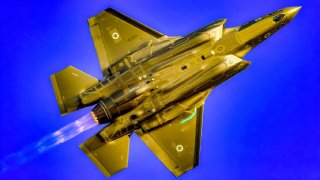Israel Faces Two-Front War as Hezbollah Increases Rocket Attacks
Hezbollah launched over 215 rockets at northern Israel on June 12, in retaliation for an Israeli airstrike that killed a senior Hezbollah commander.
Summary and Key Points: Hezbollah launched over 215 rockets at northern Israel on June 12, in retaliation for an Israeli airstrike that killed a senior Hezbollah commander.
-Over the past eight months, Hezbollah and Israel have exchanged numerous attacks, with Hezbollah increasing its aggression following Hamas's reduced capacity in Gaza.
-Hezbollah's attacks are part of a broader strategy involving Iran and other proxies. This ongoing conflict has placed Israel in a difficult position, facing a two-front war scenario. Israeli officials are considering responses, but a major operation against Hezbollah could escalate into a wider regional conflict.
Hezbollah's Biggest Attack on Israel in Eight Months Sparks Regional Tensions
Hezbollah, on June 12, carried out its biggest attack on Israel in eight months. Militants launched more than 215 rockets targeting sites in northern Israel. The rocket barrage came in response to an Israeli airstrike in Lebanon that killed a senior Hezbollah commander.
A Story in Numbers for Israel
Hezbollah and Israel have been trading attacks for eight months, and numbers tell the story of how large this undeclared war has become. A total of 3,100 projectiles were fired from Lebanon between Oct. 8 and April 2. Hezbollah launched most of these – unguided rockets usually, but also anti-tank guided missiles and kamikaze drones. Israel retaliates for some of these attacks, most often using war planes with precision strike munitions, but sometimes turning to artillery.
Hezbollah has increased the rate of its attacks since April. This is partly because Hamas has been bludgeoned by repeated raids and offensives by the Israel Defense Forces in Gaza. Hamas in October was firing up to 1,000 rockets in a day. Its rocket fire slowed to a trickle by late December, and it is now capable of firing only a few rockets per week.
Hamas is changing tactics, going to ground and fighting as small cells of three to five men sniping at IDF troops. The IDF is only operating in two areas of Gaza – in the Netzarim corridor in central Gaza, and in Rafah in the south. Hamas controls most of Gaza, but it no longer has the arsenal it boasted in October.
Testing Israel’s Red Lines
Hezbollah does have the arsenal, but it has to weigh its own strategy in this war. Iran wants Hezbollah to be knitted together with other proxies such as the Iran-backed Houthis in Yemen and the militias Tehran supports in Iraq and Syria. For instance, the Houthis attacked a ship in the Gulf of Aden on June 13, injuring a mariner. The Houthis claim they are attacking ships as a means to blockade Israel. But this has also reduced shipping through the Suez Canal, because the Houthis are attacking ships linked to the West and to any companies they think are even tangentially linked to Israel.
Meanwhile Hezbollah is increasing attacks on Israel – it wants to test Israel’s limits. Prior to Oct. 6, even one rocket fired by Hezbollah would be seen as a major escalation. In early 2023, for instance, the major controversy between Israel and Hezbollah was the fact that the group set up a tent in a disputed area Israel calls Mount Dov and Hezbollah calls the Sheba Farms.
Hezbollah rewrote the rules of deterrence on Oct. 8. When it saw that Israel did not respond with disproportionate force, Hezbollah settled in for more attacks. Israel evacuated 80,000 people from the country’s north in October, ostensibly because it feared Hezbollah could carry out a massacre similar to Hamas.
The U.S. also moved an aircraft carrier to the Eastern Mediterranean in October to prevent escalation by Iran and Hezbollah. This has invited more Hezbollah attacks, not fewer. Hezbollah now believes Israel is deterred. It saw the aircraft carrier not as a sign of Israel’s strength, but its weakness. The carrier is long gone now, but Hezbollah understands that the equation of attacks with Israel has shifted.
In May the group began using more one-way kamikaze attack drones against Israeli targets. It often singles out IDF bases and what it believes are sensitive military sites. For instance, Hezbollah carried out attacks on an IDF air traffic control site on Mount Hermon. It targets what it claims are “spy” sites along the border, by which it means antennas with equipment on them that Hezbollah assumes is used for listening or visual snooping in Lebanon.
Hezbollah continues to increase these attacks. It targeted a large Israeli surveillance blimp 21 miles from the border, deep inside Israel, in mid-May. It claims to have targeted Israeli defense company Rafael Advanced Defense Systems, as well as a site that manufactures armor for vehicles in Kibbutz Sasa.
Hezbollah also targets IDF military bases. It struck the headquarters of the IDF’s 769th Brigade in Kiryat Shmona on June 1. The brigade is one of two responsible for securing the northern border with Lebanon. Hezbollah has also targeted the 91st IDF Division, which is the main division covering the northern border.
Hezbollah wants to show it can systematically attack every IDF site in the north and that it can even reach new areas the IDF has established. For instance, it hit a soccer field where IDF troops were located in the town of Hurfeish.
Israel’s Two-Front Dilemma
This puts Israel in a bind. Israel is fighting in Gaza. It has several brigades in Rafah and in the central area of the Strip. The IDF continues to carry out raids, but it has mostly reduced fighting in Gaza to the minimum. There are talks with Hamas for a ceasefire. U.S. officials continue to shuttle back and forth to the region to pressure Hamas into signing a deal. Hamas, backed by Iran, Russia, and Turkey, and with leaders residing in Doha, does not seem to want a deal. Instead, Hamas appears to believe it is winning the war. It thinks it just has to hang on for another few months – Israel will be isolated internationally by then, and will leave Gaza.
Hezbollah has now tied its war to the Hamas war. If there is a ceasefire in Gaza, Hezbollah may stop its attacks. Officials in northern Israel, who have seen their communities forced to flee and watched children run for cover from Hezbollah rockets, are demanding the government do something. Israeli officials vow to stop Hezbollah’s attacks, but they don’t seem to know how to do that without a ground incursion into Lebanon. Iran hints that this would lead to a wider regional war.
Iran’s acting Foreign Minister Ali Bagheri Kani went to Iraq on June 12 for one of his first trips abroad since assuming the office. While there, he warned Israel against attacking Hezbollah and Lebanon. As noted, Iran wants to unite all the groups it backs into one united front against Israel. If it can do that, then any time Israel escalates against any one of the groups, all the others will join the fight.
This presents Israel with the kind of dilemma that harried Germany in 1914 when it faced a potential two-front war with Turkey and France, who were allies. Hamas now has its hand on the trigger of a regional war. Even if Israel agrees to a ceasefire with Hamas, it will have to evacuate its citizens from the north again any time Hamas wants to escalate or provoke. The IDF, Israel’s defense minister, and others may be ready for a war, but Israel’s political leadership is cautious. They have not beaten Hamas. They must wonder if they want to be trapped in a two-front war. The IDF trained for a rapid war of maneuver on multiple fronts before October 7. Instead, it got sucked into a slow war in Gaza.
Prior to October 7, Israel saw Hezbollah and Iran as the main enemy. Israel engaged in a ten year “campaign between the wars” in Syria to try to reduce Iran’s entrenchment in that country and to stop Hezbollah’s increasingly sophisticated arsenal from expanding. Today Israel faces Hezbollah’s rocket fire deep inside its own borders. In essence, Iran is now fighting a “campaign between the wars” inside Israel, and Israel doesn’t know if it should launch a major operation against Hezbollah.
Meanwhile, the war boils over in Israel’s north as Hezbollah escalates.
About the Author:
Seth Frantzman is the author of Drone Wars: Pioneers, Killing Machine, Artificial Intelligence and the Battle for the Future (Bombardier 2021) and an adjunct fellow at The Foundation for Defense of Democracies.


